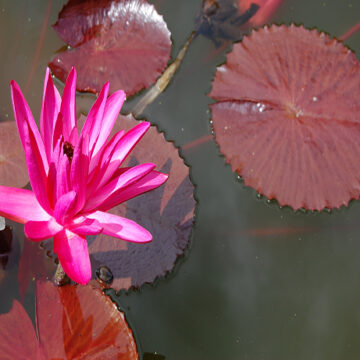Description
Nymphaea Ampla is similar to nymphaea caerulea (sacred blue waterlily) both in appearance and in its traditional use. Ampla is reported to have some of the same alkaloids in the roots and bulbs. Nymphaea Ampla is also referred to as white lotus, although it is a waterlily. This is perhaps because lotus also has similar properties and traditional use as well as a similar appearance. http://www.pubmedcentral.nih.gov/articlerender.fcgi?artid=1079300
The seeds of nymphaea are drastically smaller than those of nelumbo. The petals are also skinnier which makes them appear pointy and triangular, whereas those of nelumbo are fatter and rounder.
Growing Information: Nymphaea ampla requires full sun, fertile soil and will benefit from regular fertilization. It is best grown in about a foot of water. Because of its heavy nutrient demands it tends to fight off algae that compete for nutrients. Seeds are best off being started in pots submerged two centimeters below the surface of water in some sort of basin big enough to hold all your pots. The pots should be filled with a rich, clayey loam and the seeds pressed into the surface before submersion. For this process, it is recommended that you use bottled, distilled or clean rain water rather than tap water to fill your basin. Reports of using seed propagators have also produced positive results with these seeds for at least one grower that we know of. Plants may be grown directly in the ground, which should be bedded with fertile soil, or in pots that are sunk below the surface of the water. Once established, it can easily be propagated by dividing the rhizomes. Being from warm locations naturally, this species requires steady warmth of about 75 degrees throughout the germination process.
In purchasing, international buyers agree to assume the risk of arrival of all items. We cannot replace lost or seized items. You will be required to confirm that you agree to these terms before items can be sent.






